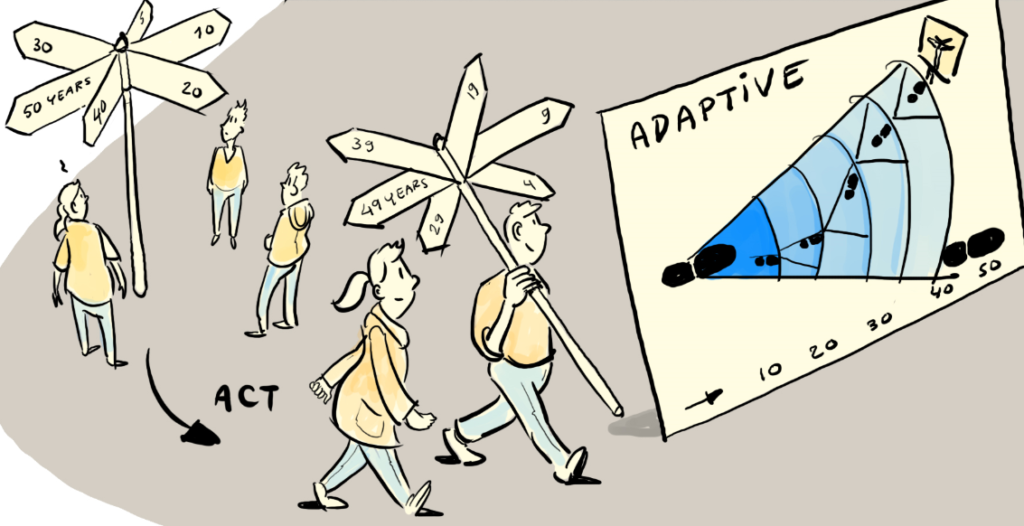Guidance: Adaptive decision-making
- In (deeply) uncertain problem contexts, a traditional ‘predict and design’ approach is no longer suitable
- Building with Nature approach is a strong example of adaptive planning
- The most important barrier hindering upscaling Building with Nature as adaptive management approach is the larger perceived uncertainty around Building with Nature
Traditionally, infrastructure decision-making has followed a ‘predict then act’ approach whereby the performance of various measures is assessed and evaluated against a clearly identified set of static future and extreme conditions. In other words, we assume the future or extreme events will look a certain way and then we design our infrastructure to perform to these levels. Now with deeply uncertain issues like climate change in the problem space a reactive approach is even more prone to maladaptation since the potential for accurately predicting future conditions is low. Anticipating on these issues with a long-term functioning or a design based on a worst-case scenario might result in measures that are very costly and not cost-effective.

The key characteristic to manage this deep uncertainty is a system approach with the inclusion of adaptive pathways. In this approach, adaptation pathways are designed that anticipate on a changing environment by continuously monitoring risks and the performance of measures. This implies identifying adaptation tipping points and developing strategies for adaptive planning and management, which are flexible and robust.
A flexible solution has the ability to adapt to whichever conditions emerge. Robustness refers to the ability of solutions to perform well across a range of plausible futures.
To develop these strategies, long-term functioning of the system and exogenous impacts on the system should be considered. Developing adaptive planning and management approaches to manage uncertainties are important for both successful Building with Nature and traditional design and implementation. The use of natural processes and materials in Building with Nature implies that solutions themselves are also inherently dynamic as processes evolve both in time and space. As such, Building with Nature is by nature an approach for adaptive planning. The Building with Nature approach is particularly well-suited to confront changes in the environment to the flexibility of application. Building with Nature solutions can typically be scaled-up as conditions change and often deliver a range of additional integrated benefits and ecosystem services that contribute to broader system resilience. Building with Nature solutions are often low- or no-regret actions which — at the very least — buy policy makers time to act upon new information on directions and magnitude of longer-term changes.
As the natural processes and materials that are used in Building with Nature are inherently dynamic, the performance of the solution is affected by the natural dynamics in these processes. In case of a coastal dune system for example, the performance of the system as a flood defence is affected by the natural dynamics of wind, waves and currents. The dynamic nature of Building with Nature solutions act as a barrier to implement such a solution. Based on experience gained in EcoShape projects, we argue that uncertainties induced by the inherent dynamics of Building with Nature can be dealt with by creating the right environment and balancing design and maintenance efforts.
Download the white paper
Further reading is available in the White paper “a future proof strategy to cope with a changing and uncertain world”, Chapter 3.1
